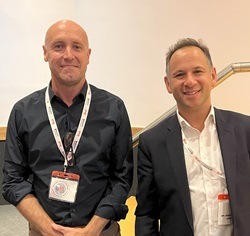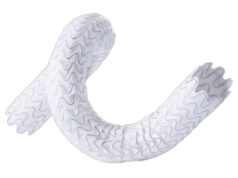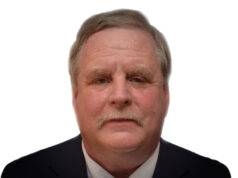 Reflecting on their recent meeting, what makes them unique and what changes have occurred since the last meeting, the leadership of Vascular Access Society of Britain and Ireland (VASBI) feel that the keys to the continued growth of vascular access are patient involvement, engaging physicians early in their career, and remembering the importance of multidisciplinary participation.
Reflecting on their recent meeting, what makes them unique and what changes have occurred since the last meeting, the leadership of Vascular Access Society of Britain and Ireland (VASBI) feel that the keys to the continued growth of vascular access are patient involvement, engaging physicians early in their career, and remembering the importance of multidisciplinary participation.
Whilst speaking to Renal Interventions at their latest annual meeting in Birmingham, UK (28-29 September), VASBI vice president Jeremy Crane (Imperial College Healthcare NHS Trust, London, UK) outlines the growth that they have experienced, saying that “the number of delegates have surpassed any previous meeting since inception of VASBI, not just from one specialty but across multidisciplinary teams involved in vascular access; haemodialysis and vascular nurses, interventional radiologists, nephrologists and transplant and vascular access surgeons.” He continues by highlighting that this growth and diversity in specialties is “also reflected in the presentations”, saying they “have been top quality across the board, so everyone has interest in the range of presentations.”
It is this multidisciplinary focus that both Crane and VASBI president Robert Jones (Queen Elizabeth Hospital, Birmingham, UK) feel is essential not only to the society and the meeting, but also to vascular access in a broader sense. Speaking to Renal Interventions separately, Jones states that “there is a lot of enthusiasm and passion for vascular access around the country, and VASBI is the umbrella for that, in the sense that it brings everyone together, because we are the only true multidisciplinary vascular access society in the UK.”
When asked how he felt the multidisciplinary aspect of vascular access has been represented globally, Crane adds that “I go to a lot of meetings internationally and I enjoy them all, but of all the ones that I have been to, I do believe that this is the most multidisciplinary based of all the vascular access meetings. I think that that is one of the big attractions of VASBI [and] that is reflected in the number of delegates we have [attending] today.”
Patients guiding clinicians
Something that both Jones and Crane show a strong passion for is the involvement of patients in VASBI and society meetings in general. “What patients add is so important but is often overlooked” Crane expresses. He continues, saying “we think we might be doing the right thing, but if a patient says to you ‘actually, that is not what we want’, you are going down the wrong road without realising it. A patient can level things out and explain to you exactly what is important to them.” This is the key point, he feels, for all clinicians, “because what is important to them should be important to us.”
For Crane, it is not just about showing compassion for the patient that is receiving treatment; it is also beneficial for the discipline on a larger scale. “Actually learning from the patients is a way of advancing vascular access, so it is not just about the technical or scientific side, it is the personal side, the patient side. And of course, it is about not treating the disease, it is about treating the patient with the disease, and that is something that we really need to home in on, and that is something that VASBI is trying to implement as a society.”
Similarly, Jones feels that patient involvement is key to the continued growth of VASBI, and apparent. “We have a patient on council; he is vocal and proactive during the meetings and in general [and] he shares his experiences, some of which, as doctors, we often overlook from the psychology perspective. That brings us on to the fact that we have had a psychologist input at the meeting this year as well, which is really important.” It is not only within the council of VASBI that patient participation is vital, Jones postulates. “As you witnessed at the meeting this year, we also invited some other patients as delegates, who were very proactive in discussions, guiding us as clinicians on how we could be better treating patients.”
What lies ahead
With regards to the future of VASBI and subsequent meetings, there is a clear priority at the forefront of both Crane and Jones’s minds; new blood. With concerns coming out of the meeting regarding the quality of training in all relevant vascular access specialties, the president and vice president of the society are keen to attract trainees and those who are earlier in their career, as “they are the future”, as Jones puts it.
He adds that “a few people around the room over the last couple of days have said to me that ‘we did not even know that this meeting or society existed and the content and quality have been fantastic.’ So, I think we have a way to go in terms of promoting and publicising the society.” His plan to address this lack of awareness? “Obviously, social media is the main vehicle for this sort of thing nowadays, so I think we can use this a bit more effectively moving forward.”
One factor, according to Crane, that may be contributing to the lack of awareness is the fact that vascular access is “somewhat a Cinderella specialty”, as he puts it. Despite this, however, he is still confident that they will be able to attract new physicians to it. “It is the kind of specialty that, once you get into it, it evokes a passion. A lot of that is because, when it comes to dialysis, those patients are the underdog. In other words, […] transplants are a very “sexy” sort of field; it is always in the news, it is timely, it is topical, and the underdog is the dialysis patient, who has either never had a transplant or can never have a transplant.” He feels that working in vascular access allows you to “really champion their cause” and that “once you get that bug, it catches, and then you get that real passion for it.”
Final thoughts
As our conversations draws to a close, the vice president of VASBI reflects on the progress that has been made since taking the reins alongside Jones. “When Rob Jones and I took over as president and vice president respectively, we really wanted to grow this meeting and we wanted to make it purely a multidisciplinary team (MDT) meeting, rather than having one aspect of the MDT overrepresented. I feel that we brought in lots of new people last year, and new people begets more new people. I think this year there are lots of people that have never been to VASBI before and I am hoping that the success of this meeting will be reflected in next year’s meeting, when we are hoping that even more people come. I think that, as the organisation grows, as we get more money from industry, for example, we can invite people from across the globe to come and speak to us, so that the meeting just gets better and better in terms of quality and the amount of delegates attending. We are going to be in Cardiff next year, a similar time of year, a great venue and we are really excited.”
As Jones closes: “As you can see, the meeting has grown since last year; we have record attendance this year [with] 160 registrants, which is the maximum we have ever had in the history of the society. So, it is a good signal that people are enthusiastic about these meetings, and it is the best forum for us to learn and obtain experience from one another.”











